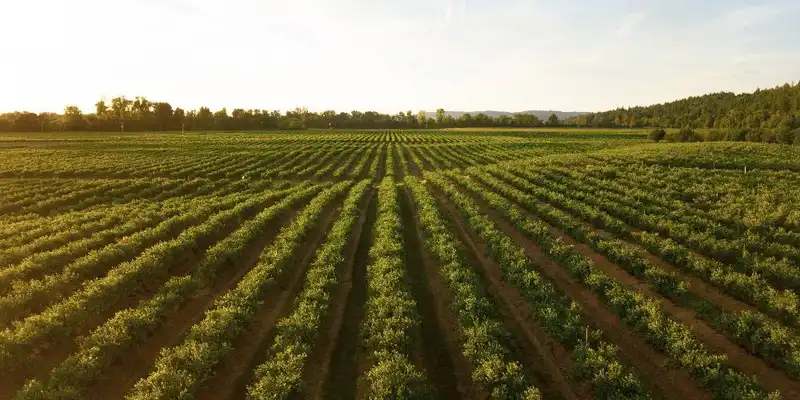The Importance of Food Traceability
What is Food Traceability?
Businesses take pride in being able to tell their customers that their fish comes from the cleanest waters in the world. Or that their chocolate is produced with the most ethically sourced cocoa beans. How do they know that? Because they trace their food.
Food traceability tells businesses where their food ingredients come from and where they end up. From the raw ingredients in the ground to the packaging it ends up in on a grocery store shelf that's the level of in-depth data a company can gain through food traceability software.
Without such software, though, it's merely guesswork for any business owner or worker in the food production or manufacturing industry. It can then end up being a game of Russian roulette, with any given day offering the opportunity for a food recall that could cause financial hardship.
Why is Food Traceability Important?

Business owners and managers can be so preoccupied with satisfying their clients that they forget about what else matters. Everything from food safety to corrective action in the event of a product recall can see the need for a food traceability process.
Food Safety Measures
Viruses, bacteria, and parasites cause over 250 foodborne diseases. According to the Centers for Disease Control and Prevention, these same diseases cause about 3,000 deaths annually.
Food traceability will not prevent every food recall. However, it can play a part in making sure that food be it from a factory or a restaurant is safe for human consumption.
Tracking Food Products in Real-Time
An integral part of food traceability involves tracking an ingredient or product's history from when it arrives as a raw ingredient, to its final destination on a retailer's shelf.
With food traceability software and diligent practices, that's entirely achievable. A business owner or manager can then find out where food is at any time in the supply chain.
Fast Recall Action
In 2019, there were 641 food recalls in the United States. No business is exempt from them, but having food traceability measures in place allows you to take swift action. You can identify at which part of the food chain your food supplies were compromised. You can then initiate recalls for batches you tracked through your supply chain.
Regulation Compliance
Through the Bioterrorism Act of 2002 and The Food Safety Modernization Act of 2011, businesses must comply with a range of regulations. Some of these regulations include being able to show the movement of your products from start to finish.
Having food traceability already in place makes compliance far more straightforward.
Challenges When Tracking Your Food
If food traceability software was entirely straightforward, then all businesses would have it. There are challenges that food businesses have to overcome.
The CostFood traceability system technology can be expensive. Not only do companies have to factor in the initial setup costs, but the ongoing maintenance of that system and expenses such as product labeling.
The Admin Work
Traditional food traceability systems can add a time-consuming layer of data analysis and admin. The sheer volume of information produced through food product tracing can be overwhelming.
Checking Regulations
Laws and regulations can differ for each state. As a result, companies will need to spend time checking that their new processes are relevant and compliant.
Consumer Awareness
Customers want to know where their food comes from. They want to know if the ingredients you use are organic, gluten-free, and vegan, just to name a few. This consumer awareness means business owners need to dedicate time to ensuring their food traceability system has such information available.
How to Implement a Food Traceability System
Don't let the thought of a new system put you off, for it's easier to implement food traceability into your new or existing business model than you might think.
Keep Records
The most important thing to factor into food traceability is record-keeping. Records containing everything about your food product must be kept both for food traceability and FDA inspections.
information to keep can include-
- Contact and food information of your suppliers
- Product descriptions (delivery & expiry dates, origin, and quantity)
- Your customer information (individuals, hospitality industry, grocery stores, etc.)
Install a Lot Tracking System
It can seem daunting to keep track of every single raw ingredient and finished product. Still, a lot tracking system makes that easier. Such a system can also enable you to monitor expiry dates and potentially avoid food recalls that cost your business money and reputation.
Adopt New Practices
Getting used to food traceability can take a while. Still, the most important thing to remember is that it's in the name of business and customer safety.
Use your batch tracking system and food traceability processes to identify food and ingredients throughout the manufacturing line. From the production line to the plate, you can adopt new practices that make everyday business far easier.
Conclusion
Food traceability is a form of food tracking that can prove useful in all manner of food industries. Whether you're the head chef of a restaurant or a line manager of a food manufacturing plant, such a system can offer much-needed peace of mind.
Food traceability can lead to less food recalls, better product tracing, and a more manageable paper trail company-wide. It can also enable you to comply with FMSA and FDA protocols far more readily than without such a system.
While traditionally, the cost, admin, consumer awareness, and regulations can make the idea of food traceability seem not worth your while, the pros far outweigh the cons. You get to enjoy tracking products in real-time, improved food safety measures, not to mention swift recall action should you need to take it.
With record-keeping and a new lot tracking system, you can now enjoy a new level of safe food manufacturing that may have never seemed possible before.





